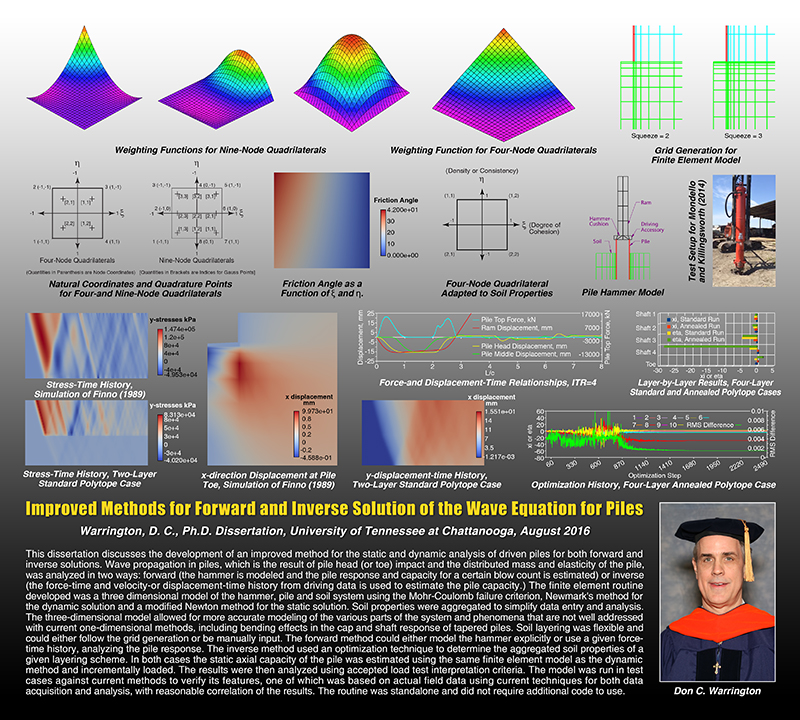Don Warrington
Improved Methods for Forward and Inverse Solution of the Wave Equation for Piles
A Dissertation Presented for the Doctor of Philosophy in Computational Engineering, The University of Tennessee at Chattanooga
Don C. Warrington, August 2016
Abstract:
This dissertation discusses the development of an improved method for the static and dynamic analysis of driven piles for both forward and inverse solutions. Wave propagation in piles, which is the result of pile head (or toe) impact and the distributed mass and elasticity of the pile, was analyzed in two ways: forward (the hammer is modeled and the pile response and capacity for a certain blow count is estimated) or inverse (the force-time and velocity-or displacement-time history from driving data is used to estimate the pile capacity.) The finite element routine developed was a three dimensional model of the hammer, pile and soil system using the Mohr-Coulomb failure criterion, Newmark's method for the dynamic solution and a modified Newton method for the static solution. Soil properties were aggregated to simplify data entry and analysis. The three-dimensional model allowed for more accurate modeling of the various parts of the system and phenomena that are not well addressed with current one-dimensional methods, including bending effects in the cap and shaft response of tapered piles. Soil layering was flexible and could either follow the grid generation or be manually input. The forward method could either model the hammer explicitly or use a given force-time history, analyzing the pile response. The inverse method used an optimization technique to determine the aggregated soil properties of a given layering scheme. In both cases the static axial capacity of the pile was estimated using the same finite element model as the dynamic method and incrementally loaded. The results were then analyzed using accepted load test interpretation criteria. The model was run in test cases against current methods to verify its features, one of which was based on actual field data using current techniques for both data acquisition and analysis, with reasonable correlation of the results. The routine was standalone and did not require additional code to use.
